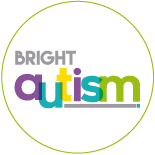
The Evolution of Autism Therapy: A New Dawn
Autism therapy has come a long way since the early days when it was barely understood and often mismanaged. Today, a mix of innovative techniques, specialized tools, and individualized care plans have revolutionized the way we approach autism therapy. This evolution is not just a testament to human ingenuity, but also to the profound love and dedication that families, therapists, and educators have for autistic children. It’s a journey marked by resilience, discovery, and above all, hope.
Personalized Approaches in Modern Autism Therapy
One of the most remarkable shifts in autism therapy has been the move towards personalized approaches. No two children with autism are exactly alike, and their treatment plans shouldn't be either. Personalized therapy considers each child’s unique strengths, challenges, and interests. This tailored approach facilitates more effective learning and development, whether through specialized speech therapy, sensory integration techniques, or customized educational plans. For instance, technology-based interventions such as apps designed for communication are making personalized therapy more accessible and efficient.
The Role of Technology in Transforming Autism Therapy
Technological advancements have opened up new possibilities in autism therapy. From virtual reality environments that help children practice social interactions to wearable devices that monitor physiological responses to stress, technology is paving the way for innovative therapies. These tools offer new avenues for sensory regulation, social skills development, and even emotional processing. For example, apps that use AI to recognize and respond to emotional cues can help non-verbal children communicate more effectively. And the future holds even more promise, with ongoing research into how emerging technologies can further enhance therapeutic outcomes.
Family Involvement: The Heart of Effective Therapy
The involvement of family members in the therapy process is critical. Parents and siblings are not just supporters; they are co-therapists who can provide invaluable insights and encouragement. Family-centered therapy models emphasize collaborative goal-setting, consistent practice of therapeutic techniques at home, and regular family therapy sessions. This approach ensures that the child’s learning and development are supported in all environments, creating a more consistent and effective therapeutic experience.
Integrative Therapies: A Holistic Approach
Combining multiple therapies can provide a more holistic approach to autism treatment. Integrative therapies may include a mix of traditional behavioral therapies, speech and language interventions, occupational therapy, and even alternative approaches like music and art therapy. By addressing multiple facets of a child’s development, from communication and social skills to motor coordination and emotional regulation, integrative therapies offer a comprehensive treatment plan that can adapt to changing needs over time.
The Impact of Early Intervention
Early intervention has proven to be one of the most effective strategies in managing autism. Research consistently shows that the earlier therapy begins, the better the outcomes in terms of social skills, communication abilities, and overall development. Early intervention programs often involve a combination of therapies, including ABA (Applied Behavior Analysis), speech and occupational therapy, and parent training. These programs aim to capitalize on the plasticity of the young brain to instill critical skills and coping mechanisms that children will carry with them for life.
Creating Inclusive Environments
Environments that are inclusive and supportive play a crucial role in the success of autism therapy. This includes not just specialized classrooms and therapy centers, but also mainstream schools, community activities, and even homes. Inclusive environments provide opportunities for autistic children to interact with their peers, practice social skills, and participate in everyday activities. Designing such environments often involves sensory-friendly adjustments, like quiet rooms and tactile play areas, as well as training for staff and educators to better understand and support autistic children.
Looking Ahead: The Future of Autism Therapy
The landscape of autism therapy is constantly evolving, thanks to ongoing research and innovation. Future advancements may include more sophisticated technologies, new therapeutic techniques, and even breakthroughs in understanding the genetic and neurological underpinnings of autism. These developments hold the potential to make therapy more effective, accessible, and personalized than ever before. At the heart of these advancements is a commitment to improving the quality of life for individuals with autism and their families. We are living in a truly transformative era for autism therapy, with new tools, approaches, and understandings emerging all the time. For parents, caregivers, and professionals, staying informed and involved is key. By embracing these advancements, we can provide our children with the best possible opportunities for growth, learning, and fulfillment.




Leave a comment